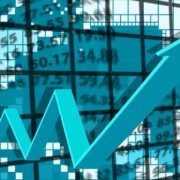Battered by natural disasters and the COVID-19 global pandemic, the Philippine economy is projected to contract by 1.9% in 2020. However, according to the World Bank’s latest Philippines Economic Update released on Tuesday, June 9, optimism remains that the country can bounce back within the next two years.
With the eruption of Taal Volcano and more significantly, the global outbreak of COVID-19 which forced strict containment measures have led to severe disruptions across several industries in the Philippines from manufacturing, agriculture, tourism, construction and trade, according to the World Bank’s report, titled ‘Braving the New Normal‘.
Greatly impacting millions of households nationwide as well as overseas Filipinos around the World, the total impact of these catastrophic events on the economy has been broad-based and deep—halting investment activity and leading to the lowest consumption growth in three decades.
Private consumption growth fell to 0.2% in the first quarter of 2020 from 6.2% in 2019. The hotel and restaurant industry suffered the most, contracting by 15.4%.
The economic contraction in 2020 will likely lead to a tremendous increase in poverty. Containment measures have cut off income streams from seasonal wage earners and those engaged in entrepreneurial activities in non-agricultural activities and low-end service jobs, which were the drivers of poverty reduction in recent years.
“During these difficult times, strengthening the capacity of the healthcare system to control the outbreak while protecting poor and vulnerable households remains an urgent task for the country,” said Achim Fock, World Bank Acting Country Director for Brunei, Malaysia, Philippines and Thailand.
“Similarly, financial support to affected firms, especially small and medium enterprises, to prevent job losses and bankruptcy, can help ensure that the recent shocks do not cause permanent damage to the country’s productive capacity and human capital.”
As per a survey conducted by the Philippine government, 77% of micro and small firms and 62% of medium-sized firms had to close due to the enhanced community quarantines. Those that remained open suffered a 66.5% drop in sales.
The growth forecast for 2020 assumes that the containment measures will gradually ease in the second half of 2020 and economic activities shall return in several sectors of the economy.
With income losses and heightened levels of uncertainty, household consumption and private investment are also expected to remain minimal.
However, economic growth prospects and poverty figures are anticipated to improve in succeeding years which would be driven by a rebound in consumption, a stronger push in public investment, supportive fiscal and monetary policies, and the recovery of global growth.
For 2021, economic growth is projected to return to above 6% and 7% for 2022.
Increased economic activity surrounding national elections is also anticipated to fuel growth in 2022.
The Philippines’ strong fundamentals, built over decades of structural reforms, has helped the economy to weather the storm brought on by the COVID-19 pandemic. The Philippines has a surplus of external reserves along with the lowest public external debt in the East Asia and the Pacific Region.
Further, the Philippines has the highest reserve ratio in the region which indicates that monetary policy has plenty of room to inject liquidity into the economy and help ignite growth.
Rong Qian, World Bank senior economist, said the country’s digital infrastructure will play a critical role in its economic recovery.
“Measures that restrict mobility, regulate physical contact, and limit business activity have forced more businesses and families to use the internet for transactions,” said Qian. “This change in consumer behavior and firm operations is expected to continue even after quarantines end. To take full advantage of this situation and help the economy in recovering from the losses it has suffered due to the lockdown, the country must ramp up its efforts to accelerate the digitalization of the economy.”
The report notes that the Philippines must improve its digital infrastructure to ensure reliable and affordable internet service for growth. In the report, it is recommended that the country creates an environment for enabling policies for a competitive broadband market and enhanced access to affordable internet services throughout the country.






